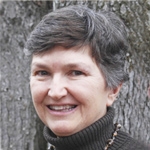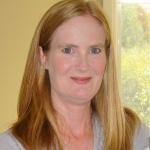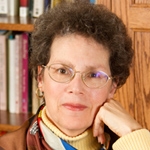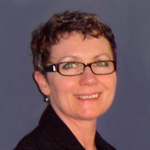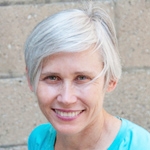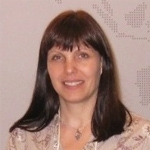 2014 Speakers & Topics
2014 Speakers & Topics
Amy L. Gilliland, Ph,D., BDT(DONA) - Dr. Gilliland is an AASECT Certified Sexuality Educator, a psychology instructor at Madison College, and is one of the first DONA International birth doula trainers. Over her twenty-five year career, her work has spanned the perinatal spectrum. Dr. Gilliland has published research on birth doula support for over ten years, but has also published on female sexuality.For UW Extension, Dr. Gilliland conducts workshops on attachment and infant mental health. She has worked with hundreds of families during the perinatal period. Her real love is taking research and making it immediately useful for those at her presentations. Dr. Gilliland is a lively and engaging speaker. Her newest venture is her popular blog, www.doulaingthedoula.com.
Topic: The Doula Effect: how and why doulas help mothers have shorter labors, less pain, and more satisfying births - [View Abstract]
Men are in the midst of cultural change of redefining fatherhood. What hasn’t changed yet is the cultural assumptions of perinatal professionals towards men’s involvement in pregnancy and childbirth. Taking a biopsychosocial approach to understanding male behavior and needs during labor, Dr. Gilliland utilizes gender theory, studies of men's experiences of pregnancy and birth, and her own original research to increase the effectiveness of perinatal professionals. Participants can expect to comprehend male behavior more deeply by confronting their cultural assumptions, and bringing together their own experience with new knowledge.
Doula support practices of mothers during labor and birth are complex processes that involve attachment behaviors, therapeutic strategies, and communication skills. Similar to the infant relying on a primary caregiver as an attachment figure, the mother relies on the doula as a secure base during labor. In both situations the doula and caregiver are available for assistance; can accurately perceive her emotional needs; effectively represent her interests; are strong and capable physically and emotionally; and have resources that the mother or infant does not possess. Additionally, the rhythm and ritual of labor support set the stage for attunement between doula and mother, similar to the attunement process between mother and infant outlined by Daniel Stern. This research is significant since it provides a strong theoretical basis why doulas are effective; namely that they provide a focus for attachment behavior and provide a secure base for the laboring mother. The doula as a secure base theory also offers a well developed explanation why nurses have been shown to be less effective than doulas in obtaining the same outcomes. Except in unusual situations, nurses and fathers are unable to fulfill many of these attachment functions for mothers. With further development, this may become the fundamental theory of doula support.
Since graduating as a first BSc midwife in 2000 (after a period of 14 years when there were no midwives trained in Slovenia) Polona Mivšek has become the first midwifery educator in Slovenia (now Head of Midwifery at the University of Ljubljana, the only midwifery school in Slovenia, Leader of undergraduate Midwifery programme and a Head of midwifery chair) and the first and currently the only midwife with a PhD in Slovenia. In order to develop Slovenian midwifery in the best possible way she nationally actively collaborated with women’s organisations, professional midwifery organisations and Ministry of Health. Her bibliography consists of 140 works, most important: 10 peer-reviewed scientific papers, 8 peer-reviewed professional papers, 19 scientific papers published in conference proceedings, 5 chapters in monograph. The main research interest of the MC Fellow is midwifery; in a broader sense women’s reproductive health through the sociological and psychological ocular.
Andrew Bisits is the Director of Obstetrics at the Royal Hospital for Women, Sydney, Australia- a tertiary academic hospital which oversees 4000 births per year. He moved there from Newcastle, 150km north of Sydney, four years ago. In Newcastle he had been the director of Obstetrics for eight years. Dr Bisits has been in full time obstetrics for 30 years this time including the training and residency positions. He has had a strong interest in breech birth since the term breech trial was first planned. In the research arena he has a strong leaning towards epidemiology and biostatistics. In the clinical arena he has participated in several initiatives to promote normal birth through helping establish primary midwifery care programs for pregnant women. Dr Bisits has a conjoint associate professorial position with the UNSW and is on the Australian board of ALSO (advanced life support in obstetrics).
Diane Wiessinger, MS, IBCLC,
is a co-author, with Diana West, Linda Smith, and Teresa Pitman, of La Leche
League International’s Sleep Sweet: Naptime and Nighttime Strategies for the
Breastfeeding Family. She is also a
co-author, with Diana West and Teresa Pitman, of the 8th edition of LLLl's
Womanly Art of Breastfeeding. Other publications include chapters in Genna's
Supporting Sucking Skills in Breastfeeding Infants and Smith's The ABC's of
Private Practice, and journal articles and essays on latching, lip ties, D-MER,
and breastfeeding language. Diane self-publishes more than 75
breastfeeding handouts for mothers. She has spoken in over 20 states and
in Europe, Asia, and Oceania.
Breeders, veterinarians, zoo curators, and field researchers with an interest in mammalian infant survival don’t focus on lactation. They focus on birth. If a birth is unimpeded, postbirth feeding almost always ensues; if there are too many birth interventions, non-human mammal mothers may reject the baby, and there is no feeding. Interventions can include a change of location during labor, an unfamiliar setting, a laborless birth, removal of normal birth smells, stress, and more. In other mammals, a good birth isn’t a bonus, it’s a basic. This talk ranges from infant survival strategies to the importance of maternal cleaning of her newborn, to the biology behind a mother drowning her toddlers in order to keep a boyfriend. The solemn and strong message: "It's the birth, silly!"
Edwin van Teijlingen is a medical sociologist with an interest in mixed-methods research. He has published widely in the field of midwifery and maternity care. He has also published on various aspects of research methods in a format easily accessible to a lay audience, including a paper on research ethics published in a midwifery journal.
He has conducted cross-cultural research into the organisation of maternity care, whilst his most recent overseas’ research is largely based in South Asia. He is professor at Bournemouth University, England and Visiting Professor at two universities in Nepal.
His edited books include: Birth by Design: Pregnancy, Midwifery Care and Midwifery in North America and Europe, New York: Routledge, 2001 and Midwifery and the Medicalization of Childbirth: Comparative Perspectives, New York: Nova Science, 2004
Pregnancy and birth are physiological events embedded in a social and cultural setting and therefore a good example of the application of a medical or social model.
On the one hand, the average woman in childbirth is not ill because pregnancy is not an illness. On the other hand, pregnant women are deemed to need a lot of health care throughout pregnancy and childbirth. Those who support the idea of a medical model often claim that: ‘Birth is only safe in retrospect’. Whilst those more in line with the social model would make the counterclaim that “every pregnancy is normal unless there are indications that something is wrong” or “childbirth is in principle a normal physiological event”.
The importance of understanding which model someone is adhering helps us to understand where they are coming from, what their likely view of the problem and hence to likely solutions are.
Fleur Bickford is an International Board Certified Lactation Consultant (IBCLC) and a Registered Nurse with a Bachelor of Science from Queen's University. Her nursing background is in maternal and newborn care and she currently works in private practice in Ottawa, Ontario, Canada. Fleur is very active in the lactation community as president of Ottawa Valley Lactation Consultants and a professional speaker whose talks and articles have been shared internationally. During her time as a Leader for La Leche League Canada, Fleur served as a member of both the Professional Liaison Department and the Social Media Advisory Committee.
Fleur Bickford is an International Board Certified Lactation Consultant (IBCLC) and a Registered Nurse with a Bachelor of Science from Queen's University. Her nursing background is in maternal and newborn care and she currently works in independent practice in Ottawa, Ontario, Canada. Fleur is very active in the lactation community as past president of Ottawa Valley Lactation Consultants and a professional speaker whose talks and articles have been shared internationally. During her time as a Leader for La Leche League Canada, Fleur served as a member of both the Professional Liaison Department and the Social Media Advisory Committee. Recently, Fleur has been instrumental in the creation and development of a regional breastfeeding website for parents in the Ottawa area.
Professor Helen Ball is Head of Anthropology at Durham University in the UK. She has been researching infant sleep for the past 20 years, concentrating on the sleep ecology of infants, young children and their parents. She has conducted research in hospitals and the community, and contributes to national and international policy and practice guidelines on infant care. Last year Professor Ball received an award for Outstanding Impact in Society for her research from the UK’s Economic and Social Research Council. She pioneers the translation of academic research into evidence for use by parents and healthcare staff via the Infant Sleep Information Source website.
In this talk we will explore research that examines normal infant sleep development and consider the factors that affect infant sleep such as what babies are fed, where they sleep, and how we interact with them. We will compare human babies with those of other mammals and think about the ways in which biology leads to different caregiving needs and styles.
Using the research we have conducted at Durham Parent-Infant Sleep Lab, and that of other infant sleep researchers, we will consider what we know about parental attitudes and practices regarding night-time infant care, and practical issues such as parental tiredness, bedsharing, and sleep safety.
Henci Goer, award-winning medical writer and internationally known speaker, is an acknowledged expert on evidence-based maternity care. Her first book, Obstetric Myths Versus Research Realities, was a valued resource for childbirth professionals. Its successor, Optimal Care in Childbirth: The Case for a Physiologic Approach, has won the American College of Nurse-Midwives “Best Book of the Year” award. Goer has also written The Thinking Woman's Guide to a Better Birth, which gives pregnant women access to the research evidence, as well as consumer education pamphlets and articles for trade, consumer, and academic periodicals. Goer’s latest project is Childbirth U, a website selling narrated slide presentations at modest cost that will help pregnant women make informed decisions about care.
By keeping continuous track of the fetal heart rate during labor, cardiotocography (CTG), also known as electronic fetal monitoring, was supposed to prevent brain injury due to inadequate oxygenation and reduce emergent deliveries for suspected distress. This presentation will lay out the evidence documenting its failure to deliver on either count along with the reasons why its use persists despite this. In addition it will recommend evidence-based and “good practice” strategies during labor for minimizing the likelihood of nonreassuring fetal heart rate as well as optimal fetal monitoring practices for low- and at-risk women.
A midwife since 1983, Lynne has practiced in public and private sectors, and worked as a community midwife for 14 years, providing support and midwifery care for women birthing at home. In 1997, she helped establish the Selangor Private Hospital Maternity Unit, where she continued to work until her move with her husband to Tasmania in 2008. She shares her current home with a dog, a chicken, platypus, Tassie Devils, echidnas and 40+ alpaca.
As a manager, professional development and ‘hands-on’ midwife, Lynne has developed policies, procedure, practice guidelines, education programs and learning packages for midwives. She has undertaken research and completed an Honors Thesis which focused on the reasons women choose a Caesarean section in a normal healthy first pregnancy. She currently co-ordinates and lectures the Graduate Diploma of Midwifery at the University of Tasmania. Passionate about the sociological influences on pregnancy, birth and breastfeeding, she is about to commence a PhD.
Classified as major surgery, Caesarean Section (CS) most simply defined, is a procedure performed to remove a fetus from a woman through an incision through her abdomen and uterus. The focus of this presentation lies in the shifting representations of CS: from its earliest origins, to representations of CS in contemporary birth. Historical elements have significantly influenced the development of CS, and these are briefly discussed to contextualise its shifting use in relation to contemporary understandings of CS: including the normalisation of CS, media representation of CS, maternal request CS in the absence of a medical indication, the ‘Natural’ CS, the experience of CS through women’s eyes, and how women can best be supported by health professionals throughout their journey of CS and birth after CS.
Topic: Infant feeding and infant care in a South Asian immigrant community - [View Abstract]
The idea of glucose as the sole metabolic fuel for the neonatal brain is still over-emphasised, in spite of long standing animal and human research that shows the relevance of other metabolic fuels such as lactate and ketones. Furthermore, innovative approaches to treating hypoglycaemia with buccal glucose have shown promise in well conducted randomised trials. In view of the wide availability of simultaneous near-patient blood glucose and lactate analysis, it is now possible to move away from simplistic assessments of blood glucose alone in day to day clinical management. However the clinical assessment of neurological status remains central to the evaluation of babies who are at increased risk of fuel deficiency, and ultimately determines which babies should be subjected to any measurements.
There is increasing evidence that the cultural context of infant care is influential in both creating and mitigating risks relating to sudden unexpected death in infancy; furthermore it is known that some ethnic minority communities in England show far lower risks for SUDI than the background population. Recent ethnographic work in multicultural communities in the north of England has demonstrated that attitudes and practices among the south asian immigrant community diverge from the stereotypical beliefs of the (mainly white british) primary care health professionals. 'Health' messages designed around the culture and behaviour of the white british community have no resonance with the experiences and expertise of the south asian community, and have the paradoxical potential to increase the risk to ethnic minority infants if it were not for the fact that they are largely disregarded by the minority community.
Penny Simkin, PT, is a physical therapist who has specialized in childbirth education since 1968. She estimates she has prepared over 12,000 women, couples, and siblings for childbirth. She has assisted hundreds of women and couples through childbirth as a doula. She is the author of many books on birth for both parents and professionals, including The Labor Progress Handbook, Pregnancy, Childbirth, and the Newborn: The Complete Guide, The Birth Partner: A Complete Guide to Childbirth for Dads, Doulas, and All Other Labor Companions. Her latest product for birth educators and doulas is the sibling video, “There’s a Baby”, released in Spring 2013.
Currently, she serves on several boards of consultants and editorial boards, including the journal, Birth: Issues in Perinatal Care; the International Childbirth Education Association; and the Seattle Midwifery School.
Through independent study and her work as a birth counselor, she has developed a counseling approach for pregnant survivors of sexual abuse. This work is described in the book, “When Survivors Give Birth,” which she co-authored with Phyllis Klaus, MFT, LCSW.
Today her practice consists of childbirth education, birth counseling, and labor support, combined with a busy schedule of conferences and workshops.
Penny and her husband, Peter, have four grown children and eight grandchildren, ranging in age from 10 to 27 years.
The exciting field of epigenetics contributes much to our understanding of the impact of intrauterine life on the child’s and adult’s physical and mental health, as well as the personality, stature and physical appearance. This presentation will give examples of historical events and discoveries that have led to today’s understanding that DNA – the genetic blueprint -- is only part of the equation that determines one’s life course. Epigenetics is the study of factors that foster or inhibit the expression of genes as dictated by DNA. Factors that interfere with optimal gene expression include maternal exposure to environmental toxins, violence or war, poor nutrition, emotional distress, racism, poverty and disease. The effects on the fetus can last a lifetime. The session ends with practical suggestions for institutions, individual birth workers and families to improve the maternal- fetal environment.
Despite being a routine aspect of newborn care since the 1960’s, Vitamin K for newborns has recently come under fire from parents concerned about possible side effects. Top internet search results for Vitamin K turn up numerous myths, including: “You don’t need Vitamin K if you have a gentle birth,” “Vitamin K causes leukemia,” and “Vitamin K isn’t necessary unless you plan to circumcise.” However, research evidence has consistently shown these rumors to be false. The goal for this presentation is for you to walk away with facts to help you have more informed discussions with clients about Vitamin K. In this presentation, we will cover the history of oral and injectable Vitamin K, risk factors for Vitamin K deficiency bleeding, and the research evidence behind Vitamin K supplementation.
Sonya Kujawa-Myles is a registered nurse and lactation consultant who currently works both in an out-patient breastfeeding clinic at her local hospital and through a naturopathic clinic. She originally trained at Grey’s Hospital in Pietermaritzburg, in South Africa where she obtained her RN diploma, and worked in a level 3 NICU. After immigrating to Canada in the late 1990’s she completed both her BScN and her MScN via distance education at Lakehead University and the University of Ottawa respectively. Her Master’s thesis was focused on the relationship between intravenous fluids given to mothers in the peripartum period and postpartum breast swelling. She remains a passionate advocate for the rights of women transitioning into motherhood.
Engorgement and edema in breast tissue can lead to breastfeeding challenges which may contribute to early weaning. This first part of this presentation looks at a pilot research study which explores the relationship between intravenous (IV) fluids given to mothers during the peripartum period and postpartum breast or nipple swelling in the first ten days postpartum. Women who received IV fluids during labour had higher levels of edema postpartum and rated their breasts as firmer as and more tender than women who did not receive IV fluids. The second half of the presentation will look at differentiating between engorgement and edema, and ways to treat both of these conditions.
Susan E Burger started her career in international development in 1980 as a Peace Corps Volunteer in Africa. She went on to provide technical assistance to nutrition programs in Africa, Asia and Latin America until 2001. Her education includes a Bachelor of Science in Molecular Biology from the University of Washington, a Master of Health Science in International Health from the Johns Hopkins University School Hygiene and Public Health, and a Doctor of Philosophy from Cornell University’s Division of Nutritional Sciences. She became an International Board Certified Lactation Consultant in 2002. She currently has a private lactation practice in New York City and has served on the Board of the New York Lactation Consultant Association since 2008. She wrote an article growth charts for the Journal of Clinical Lactation and has presented talks and run workshops on test weighing and the use of growth charts.
Program experience suggests that growth charts may not be as useful for screening at-risk infants as they are for education and motivation. When mothers are concerned about their baby’s current weight, growth charts can be used to enhance the investigation into her concerns. The visual trajectory of the curve of the baby’s growth can be used to expand the conversation from “how is your baby feeding now” to “how did your baby’s feeding patterns change from this point of the curve to this point of the curve.” This enriches the context from which to delve into the underlying factors that drive the dynamics of growth and determine if any of those factors need to be modified. It can also deflect the tendency to “judge” babies based on how they compare against other babies. Case studies of how the visual display of curves might influence focus will be presented.
Vanora Hundley is Professor of Midwifery and Deputy Dean for Research
and Professional Practice at Bournemouth University. Vanora trained as a nurse
and midwife in Glasgow, Scotland, and has since worked in England, Hungary and
the USA. She is an experienced midwifery
researcher, who has led a range of studies in the reproductive health field
both in the UK and internationally. She conducted one of the first randomised
controlled trials of midwife-led care. Her recent work has focused on the
impact of hospital admission during the latent phase of labour, and she is a
member of the International Early Labour Research Group. The group is currently
conducting a review of the evidence surrounding labour onset.
Traditionally women have laboured and given birth in their own homes, but over the course of the twentieth century hospital birth increased in frequency, eventually becoming the norm in many high income countries. With the move away from birth in the home, deciding when to come into hospital became an important and challenging issue for women. Midwives frequently encourage women to labour at home for as long as possible, but women often seek hospital admission because they are anxious and would like more support. In this presentation I examine the evidence surrounding early labour in hospital and ask whether we should be telling women to stay at home.
 Dr. Speakers Full Name
Speaker Credentials
Dr. Speakers Full Name
Speaker Credentials
Annet Mulder first became interested in breastfeeding in the year 2000, when she became a mother for the first time. During and because of her own breastfeeding experiences, in 2002 she became a volunteer with the Dutch breastfeeding Organization and in 2008 sat for and passed the exam administered by the International Board of Lactation Consultant Examiners. As an International Board Certified Lactation Consultant, she now
Annet Mulder first became interested in breastfeeding in the year 2000, when she became a mother for the first time. During and because of her own breastfeeding experiences, in 2002 she became a volunteer with the Dutch breastfeeding Organization text text text text more name mulder first became interested in breastfeeding in the year 2000, when she became.
 Dr. Speakers Full Name
Speaker Credentials
Dr. Speakers Full Name
Speaker Credentials








